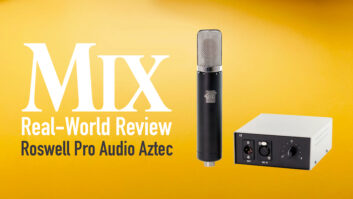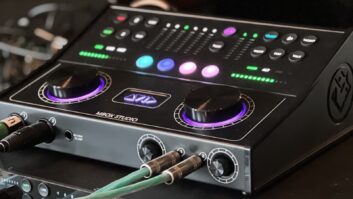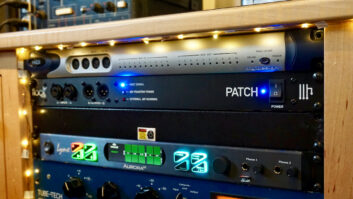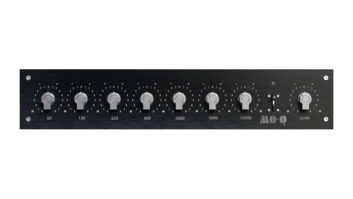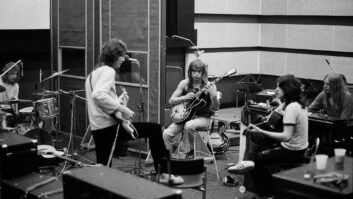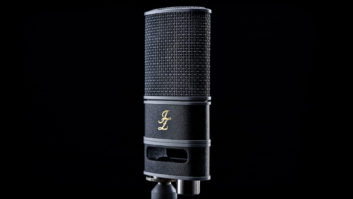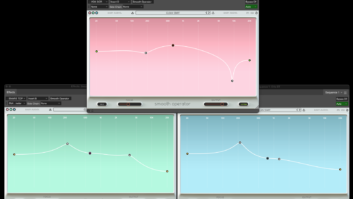Craig Anderton

Guitars are more likely to be associated with tubes and retro technology than cutting-edge software, but that’s changing in everything from recording to live sound. Although guitars aren’t total strangers to technology—MIDI guitar continues to maintain its niche, and there have been other technologies like the Sustainiac, Gizmotron and Gibson’s robot tuning—those ripples are turning into tidal waves.
Amp simulations are becoming increasingly realistic. Line 6’s Helix raised the bar for digital floor multi-effects, and now the same technology is available in the Helix Native plug-ins. IK Multimedia continues to refine AmpliTube, Peavey’s Re-Valver 4 can model different guitar sounds before going into the amp simulation itself, and Universal Audio has partnered with Softube to add amp modeling to UA’s line of Powered Plug-Ins.
But the device that has caused the biggest stir is Kemper’s Profiler Amp, which is available as a standalone processor or complete amp (both with rack versions). Its patented process creates a “profile” of how a physical amp responds to levels, the cabinet, miking and the like to mimic not just a single amp sample, but its dynamically varying character. What’s more, the profile is customizable—for example, you might like the sound of a particular amp, but wish it responded somewhat differently to touch.
Guitar players are notorious about tone, and generally suspicious of digital technology. Yet the Kemper has even found a fan in acclaimed producer/engineer Michael Wagener (Poison, Dokken, Queen, Motley Crue, Alice Cooper, Skid Row, etc.). On a recent visit to his studio, he said he was getting rid of most of his collection of amps because “I haven’t turned them on for two years.” He had profiled the amps (which users can do; they don’t need to depend on factory profiling) and said no one could tell the difference between a recorded version of the amp and the profiled version anyway.
Profiling’s limitation is the same as sampling for keyboards—garbage in, garbage out—and a profile’s quality depends on the expertise of the person doing the profiling. However, some people (like Michael Britt) have become experts at creating profiles, and offer packs of Kemper profiles commercially. Also note that it’s possible to create profiles from guitar recordings, although that limits the available sonic range; and there are user-created Kemper profiles in the cloud.
The importance of profiling for the studio is significant—you can profile a particular amp sound you liked during a session, then come back months later and reproduce the same sound. Guitarists don’t need to ship their “special” amps to recording sessions, and studios can have an essentially infinite amp backline.
Although not the same as profiling, Fractal Audio’s Tone Match process modifies a preset that’s close to an amp’s sound so that it matches a reference signal from a physical amp. This generally involves first capturing an IR of the amp’s cabinet, and after capturing the reference sound, tweaking frequency reference plots of the matched and original sounds to resolve discrepancies, if any.
This new generation of realistic amps is also transformative for live sound. It’s not just the convenience of plugging a box that fits in your carry-on into a PA instead of hauling around a Marshall stack; in addition it’s about having the same sound on stage as in the studio. What’s more, amps don’t have to be cranked to get “that” sound—you can obtain a cranked sound at any level, which simplifies life for the FOH engineer.
Another side effect is changing the definition of a “guitar amp.” When a guitarist’s total sound (including not just the amp and cabinet but also effects) appears at an output jack, feeding a conventional guitar amp is counterproductive. As a result, more guitarists are plugging into full-range, flat-response amps like PA systems (Bose, Cerwin-Vega, Electro-Voice, JBL, PreSonus, QSC, etc.) or dedicated amps like Line 6’s Firehawk 1500. These preserve the sound the guitarist worked so hard to capture.
Of course, there will always be those who insist on using only tubes, even if they can’t tell the difference in an A-B test of recordings. And there is the matter of “feel”; standing in front of a cabinet blasting out hundreds of watts of power isn’t the same as listening to an amp profile on headphones. But as software technology continues to evolve, the initial skepticism many guitar players had about the power of digital processing is fading fast.
Visit author/musician Craig Anderton’s web site at craiganderton.com, and hear his latest music at youtube.com/thecraiganderton.
